Seeing people wear masks in public spaces is a common scene in what we refer to as “the new normal.” While the experts and the data on cloth face masks and how they are worn is a topic still being debated today, the concept of wearing a mask to filter out contaminated air is not difficult to understand. Many of those public debates about effectiveness of cloth masks reference all of the same concerns your employees will have when it comes to wearing face masks at work as part of their daily Personal Protective Equipment.
Your new employee is starting a job role around known hazardous chemicals, the first question they are going to ask is, “How can I know that this will work?” Just like with cloth face masks as a precaution against Covid, your employee wants to be sure that the mask can filter out even the smallest of particles or know if it is possible for toxins to enter based on improper fit.
Training employees on when and how to wear a protective mask, how to choose the correct mask for their job role and how to maintain their equipment will give employees who work in dangerous work conditions peace of mind.
Proper Fit
Like with any PPE, masks cannot work unless they are worn properly and safety protocols are maintained, even when an employee is tempted to be lax on procedures. Masks should be customized to the person and the specific environmental hazards.
- Follow all usage instructions
- Be aware of what will compromise the effectiveness of equipment
- Always have alternative PPE available when usage limits have been met
- Perform a fit test prior to use in hazardous situations
- Employees should undergo training for all PPE
Job Role
The type of mask required for a police officer releasing tear gas, in which they must move forward and take action in a tense and dangerous situation will be different from an employee who is working in a chemical plant. Whatever masks that best suit the job role will still come with basic safety features. It will:
- Protects airways from pollutants
- Has an adequate field of vision
- Prevents fogging
- Can be applied and removed with ease
- Allows for clear communication
Regular Maintenance
Just like with anything else, protective masks have a shelf life. Adhering to all safety precautions, best practices and equipment expiration dates could save employees from breathing in hazardous pollutants that could cause permanent damage or death.
- Make sure all filtering agents are in working order and up to date
- Change out any expired or compromised components
- Replace old equipment according to life span, usage and quality
- Stay current on improvements in PPE technology and standards
Job roles often exist in hazardous conditions and we are so thankful for the men and women who take on these occupational risks. Every employee wants to be safe and every employer wants to protect their staff and maintain the highest possible safety rating. For more information about how to provide training, best practices for PPE and a comprehensive workplace safety plan, call Workplace Safety Screenings.

.png?width=500&height=500&name=Blue%20and%20White%20Classic%20Shield%20Financial%20with%20Star%20Logo%20Design%20(1).png)


